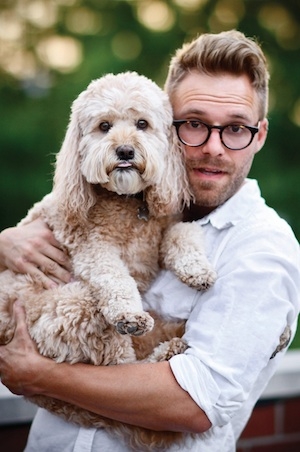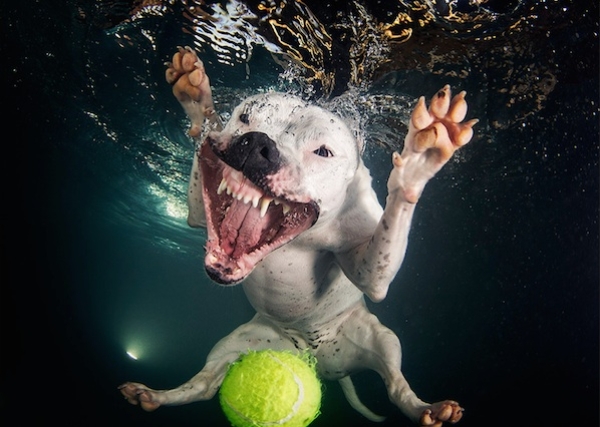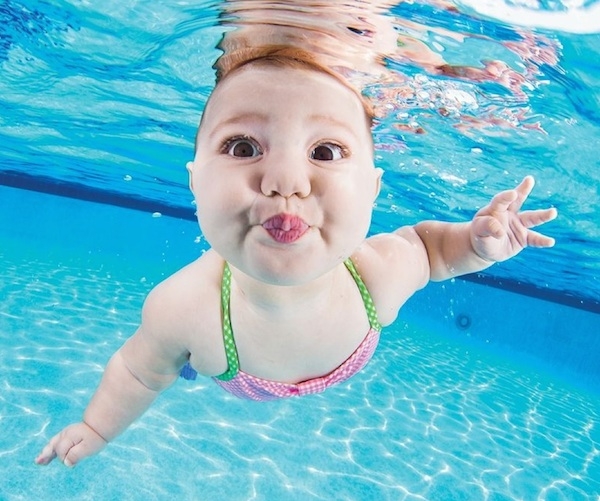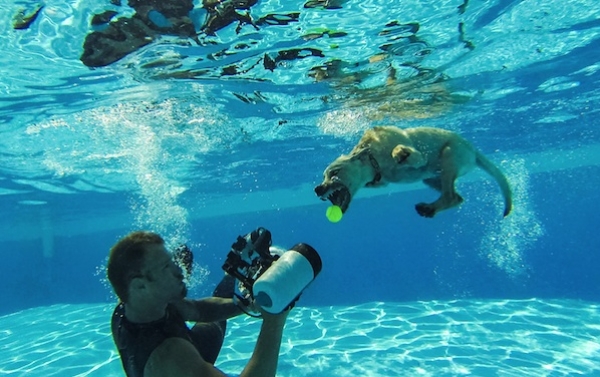Photographer Profile - Seth Casteel: "You can't expect things to go right when you're working with a cat"

|
|
|
“I was even thinking about leaving Los Angeles and going back to my hometown,” he says. Keep in mind, Casteel’s hometown is Decatur, Illinois.
But on February 9, 2012, photos on Casteel's website showing dogs ardently retrieving tennis balls under water were discovered by a Reddit user, who reposted them and more or less broke the Internet. Within 24 hours, the images had something like 100 million views, says Casteel. He began getting emails from people all over the world. He was booked onto the Today Show and Good Morning America. Literary agents contacted him, and within two weeks he had a six-figure book deal with Little Brown.
“It was an insane day,” Casteel says. “Nothing was the same afterward.”
Four years later, Casteel has just completed his fourth book: Following his best-selling Underwater Dogs (2012), Underwater Puppies (2014) and Underwater Babies (2015), Little Brown will bring out his latest this fall. It’s called Pounce.
“It’s not an underwater book; it’s a cat book,” Casteel says. “Getting cats in the water wasn’t going to work out, though I do own the domain name “Underwater Cats,” in case the world flips upside down and dogs become cats and cats become dogs.”
The new book, which as the name suggests features cats pouncing, will be an interesting case study in the relative popularity of canines versus felines. Will people respond to airborne cats the way they did to submerged dogs? Cats certainly have a fan base: An exhibition last year at the Museum of the Moving called “How Cats Took Over Internet” considered why they get an out-sized amount of attention online. Dogs, however, are tops when it comes to Internet memes, and Casteel’s previous books stand as proof of their power in print.
“Cats are not easy to photograph, but I eventually figured it out,” Casteel says. “It just takes a ridiculous amount of patience. You can’t expect things to go right when you’re working with a cat. Dogs are hands-down easier. A dog wears its emotions on its sleeve, but nobody knows what a cat is thinking.”
It’s safe to assume that Casteel’s cat book will sell well. His past work helped ignite what seems to be a seemingly limitless demand for pictures of animals behaving adorably, capriciously and above all hilariously true their own natures.

This new photographic market has been fueled by Internet sharing. Like Casteel,
Portland, Oregon-based photographer Carli Davidson turned the viral success of her pictures of dogs and cats shaking off water into a series of bestselling books. Photographer Lara Jo Regan, whose
slightly subversive books about a dog named Mr. Winkle were popular enough to be featured on an episode of Sex in the City, followed up with a hit 2014 calendar featuring dogs riding in cars.
New Yorker Jessica Shyba added some 300,000 followers to her Instagram feed with her photos of son Theo and puppy Beau napping side by side every day, while Elias Weiss Friedman, aka the Dogist, has
amassed 1.8 million followers since launching his Instagram feed in 2013.
As Money magazine noted last year, cats and dogs can be cash cows, thanks to the web.
Saved By a Spaniel
Behind this trend lay larger changes: Since 1988, pet ownership has expanded from 56 percent of households to 62 percent, according to the American Pet Product Association, and spending on pets has kept pace. BlogPaws, a company that provides social-media advice to pet enthusiasts and brands, points to a meta-trend toward the “humanization” of pets: Put simply, we want our dogs and cats to enjoy the same comforts and products that we do, from organic food to high-quality portraiture.
Professional pet photography — a job that barely existed two decades ago — is an idea whose time has come.
Casteel’s path to pet stardom began when he moved to LA to go to film school. It was during a study-abroad program in Australia that he bought a camera to shoot wildlife. Several years after that, when he was working in the movie-advertising business and volunteering at local animal shelters, he began to see a new reason to take pictures.
“I was photographing the shelter animals and starting to build up a part-time gig as a pet photographer, getting a commission once in a while,” he says. “And then I lost my job in advertising, and I thought, ‘You know what? I want to work with dogs and cats.’ So I decided to build up that business full time.”

It didn't go well. Getting little work, Casteel signed on with Groupon to shoot pets, earning about $25 a job. “By the time I paid for gas and mileage, I lost money,” he says. Things got to the point where he couldn’t pay his rent. But then he got a Groupon gig in Santa Barbara to photograph a Cavalier King Charles spaniel named Buster.
“The dog’s owner had a swimming pool, and a few minutes after I got there Buster was in the pool chasing a tennis ball. I didn’t have an underwater camera, so I went out and bought a waterproof point and shoot — a Sony TX5 — and came back and did some shots.”
Casteel liked the pictures so much that he used almost all his remaining money to buy an SPL underwater housing and started shooting other dogs underwater. He kept at it throughout 2011 and early 2012, when the world discovered his work.
Speaking for Pets
After his photos began spreading across the web, Casteel came to understand an essential rule of Internet fame: There’s no controlling it.
“I just got on the roller coaster ride and tried to figure out how to monetize it,” he says. “I didn’t want to be like the person who wins $100,000 in the lottery and then spends it all and goes back to his normal life.” First he created an online store to sell prints. He also lined up an editorial assignment with the New York Times magazine to photograph babies in water-safety courses. That work led to his Underwater Babies book.
Casteel says his method for photographing dogs underwater is relatively straightforward — the work begins on land with a game of fetch, then moves into the water as he holds his breath and the dog plunges for the offered tennis ball. Most of the photographs in his first book were shot with a Canon 7D with a Tokina 10-17mm fisheye lens in the SPL housing, along with a Canon 580EX II flash in an attached flash housing.
“Honestly, I look back at the work now, and I'm proud of it, but in terms of technical achievement, and even emotional achievement, those pictures were just the beginning,” he says. “I was always about the emotions of dogs, trying to find that range and especially the expressions.”

In the swimming pools, the essential characters of the dogs were made visible, much as Philippe Halsman’s famous human subjects revealed themselves when they jumped. “It’s really a collaboration,” says Casteel. “It’s about me and the dog and our relationship.”
Whether the camera can capture what is going on in a dog’s mind — let along a cat’s — is ultimately unknowable, of course: Despite our efforts to humanize pets, we still can’t speak to them.
In the meantime, photographs can speak for them: In recent years a number of photographers have been working with animal shelters to increase adoptions through the use of compelling photography and marketing. Since 2013 Casteel has worked with GreaterGood.org to provide shelters with access to cameras and editing gear, as well as photo-training workshops. He is also involved with a new initiative called One Picture Saves a Life to spur shelter adoptions with photography.
Pets changed Casteel’s life, and he wants to return the favor.
“Back when I was struggling, my friends all said, ‘Be a wedding photographer,’ but I didn’t want to,” Casteel says. “I told them, ‘I’m a pet photographer, and that’s that.'”


